Page 25 of 208

FEATURES OF YOUR HYUNDAI 1- 13
WARNING:o Never attempt to adjust the seat while
the vehicle is moving. This could result
in loss of control, and an accident caus-
ing death, serious injury, or property
damage.
o Do not sit or lean unnecessarily close to
the airbag to get better protection dur-
ing its deployment in case of an acci-
dent.
!
!
B090A01Y-AATPOWER DRIVER'S SEAT (If installed)The driver's seat can be adjusted appropriately
by using the control knob on the left side of the
seat. Before driving, adjust the seat to the
proper position so as to easily control the
steering wheel, pedals and switches on the
instrument panel.
CAUTION:Do not operate two knobs at the same time.
!
B090B01Y-AATAdjusting Seat Forward and Rearward
Pull the control knob forward or backward to
move the seat forward or backward to the
desired position. Release the knob and then the
seat will remain at that position.
1. Seat Back Reclining Control Knob
2. Seat Cushion Forward, Rearward and Height
Adjusting Control Knob
WARNING:To ensure the seat is locked securely, at-
tempt to move the seat forward or rearward
without using the control knob.
B090C01Y-AATSeat Cushion Height Adjustment
Move the front portion of the control knob up or
down to raise or lower the front part of the seat
cushion. Move the rear portion of the control
knob up or down to raise or lower the rear part
of the seat cushion.
HEF-180
HEF-182
1
2
Page 26 of 208
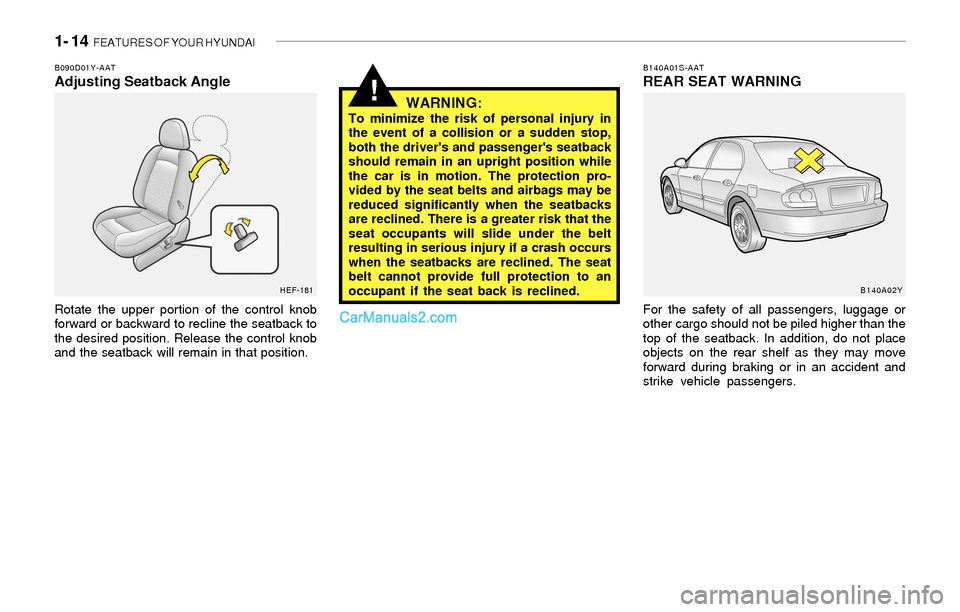
1- 14 FEATURES OF YOUR HYUNDAI
!
B090D01Y-AATAdjusting Seatback Angle
Rotate the upper portion of the control knob
forward or backward to recline the seatback to
the desired position. Release the control knob
and the seatback will remain in that position.
WARNING:To minimize the risk of personal injury in
the event of a collision or a sudden stop,
both the driver's and passenger's seatback
should remain in an upright position while
the car is in motion. The protection pro-
vided by the seat belts and airbags may be
reduced significantly when the seatbacks
are reclined. There is a greater risk that the
seat occupants will slide under the belt
resulting in serious injury if a crash occurs
when the seatbacks are reclined. The seat
belt cannot provide full protection to an
occupant if the seat back is reclined.
B140A01S-AATREAR SEAT WARNING
For the safety of all passengers, luggage or
other cargo should not be piled higher than the
top of the seatback. In addition, do not place
objects on the rear shelf as they may move
forward during braking or in an accident and
strike vehicle passengers.
HEF-181B140A02Y
Page 27 of 208
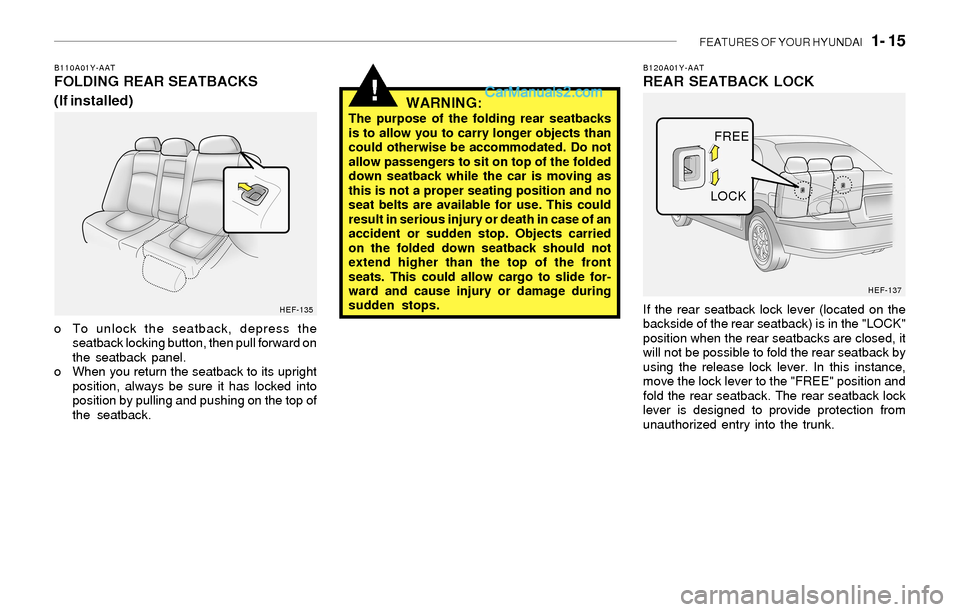
FEATURES OF YOUR HYUNDAI 1- 15
!
B110A01Y-AATFOLDING REAR SEATBACKS
(If installed)
o To unlock the seatback, depress the
seatback locking button, then pull forward on
the seatback panel.
o When you return the seatback to its upright
position, always be sure it has locked into
position by pulling and pushing on the top of
the seatback.
WARNING:The purpose of the folding rear seatbacks
is to allow you to carry longer objects than
could otherwise be accommodated. Do not
allow passengers to sit on top of the folded
down seatback while the car is moving as
this is not a proper seating position and no
seat belts are available for use. This could
result in serious injury or death in case of an
accident or sudden stop. Objects carried
on the folded down seatback should not
extend higher than the top of the front
seats. This could allow cargo to slide for-
ward and cause injury or damage during
sudden stops.
B120A01Y-AATREAR SEATBACK LOCK
If the rear seatback lock lever (located on the
backside of the rear seatback) is in the "LOCK"
position when the rear seatbacks are closed, it
will not be possible to fold the rear seatback by
using the release lock lever. In this instance,
move the lock lever to the "FREE" position and
fold the rear seatback. The rear seatback lock
lever is designed to provide protection from
unauthorized entry into the trunk.HEF-135HEF-137
FREE
LOCK
Page 28 of 208

1- 16 FEATURES OF YOUR HYUNDAI
!
!
B150C02A-AATLarger Children
Children who are too large for child restraint
systems should occupy the rear seat and use
the available lap/shoulder belts. The lap portion
should be fastened snug on the hips and as low
as possible. Check belt fit periodically. A child's
squirming could put the belt out of position.
Children are afforded the most safety in the
event of an accident when they are restrained
by a proper restraint system in the rear seat. If
a larger child (over age 13) must be seated in
the front seat, the child should be securely
restrained by the available lap/shoulder belt and
the seat should be placed in the rearmost
position. Children under the age of 13 should be
restrained securely in the rear seat. NEVER
place a rear facing child seat in the front seat of
a vehicle.
B150D01A-AATPregnant Women
The use of a seat belt is recommended for
pregnant women to lessen the chance of injury
in an accident. When a seat belt is used, the lap
belt portion should be placed as low and snugly
as possible on the hips, not across the abdo-
men. For specific recommendations, consult a
physician.
B150A02A-AATSEAT BELT PRECAUTIONSB150B03Y-AATInfant or Small ChildAll 50 states have child restraint laws. You
should be aware of the specific requirements in
your state. Child and/or infant safety seats must
be properly placed and installed in the rear seat.
Information about the use of these restraints
begins on page 1-22.
WARNING:Every person in your vehicle needs to be
properly restrained at all times, including
infants and children. In a collision, an unre-
strained child can become a "missile" in-
side the car. The force required to hold a
child on your lap could be so great that you
could not hold the child. Any child riding in
the vehicle should always be in a proper
restraint in the rear seat of the vehicle.
NOTE:Small children are best protected from in-
jury in an accident when properly restrained
in the rear seat by a child restraint system
that meets the requirements of the Federal
Motor Vehicle Safety Standards. Before
buying any child restraint system, make
sure that it has a label certifying that it
meets Motor Vehicle Safety Standard 213.
The restraint must be appropriate for your
child's height and weight. Check the label
on the child restraint for this information.
See page 1-22.
WARNING:All occupants of the vehicle must wear their
seat belts at all times. Note that this vehicle
is equipped with a Supplemental Restraint
(Airbag) System as discussed beginning
on page 1-28. The seat belts must be used
in conjunction with the supplemental
airbag system. State laws require that some
or all occupants of the vehicle use seat
belts. The possibility of increased injury or
severity of injury in an accident will be
increased if this elementary safety precau-
tion is not observed.
In addition, follow the other instructions
provided in this section.
Page 29 of 208
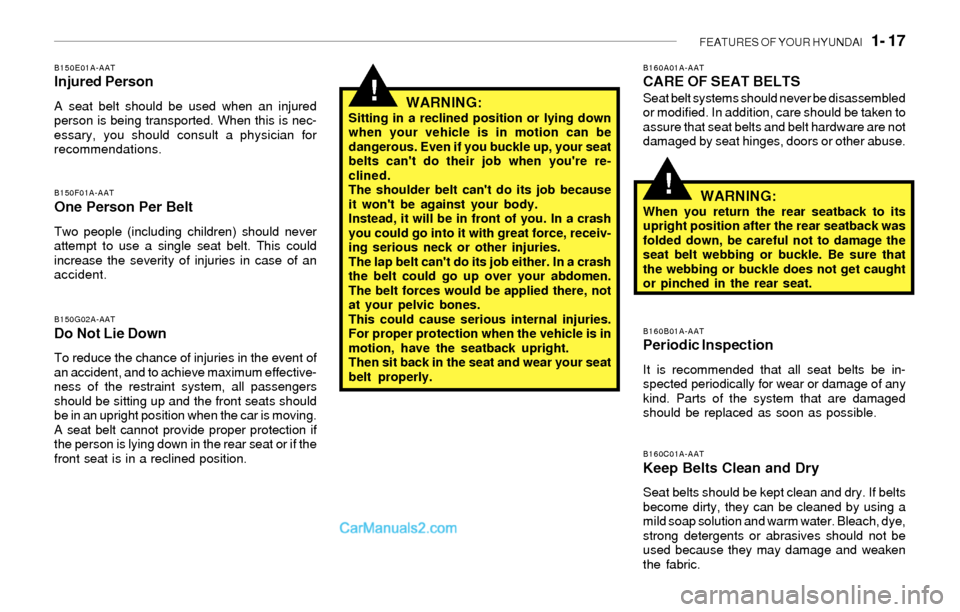
FEATURES OF YOUR HYUNDAI 1- 17
!
!
B150E01A-AATInjured Person
A seat belt should be used when an injured
person is being transported. When this is nec-
essary, you should consult a physician for
recommendations.
B150F01A-AAT
One Person Per Belt
Two people (including children) should never
attempt to use a single seat belt. This could
increase the severity of injuries in case of an
accident.
WARNING:Sitting in a reclined position or lying down
when your vehicle is in motion can be
dangerous. Even if you buckle up, your seat
belts can't do their job when you're re-
clined.
The shoulder belt can't do its job because
it won't be against your body.
Instead, it will be in front of you. In a crash
you could go into it with great force, receiv-
ing serious neck or other injuries.
The lap belt can't do its job either. In a crash
the belt could go up over your abdomen.
The belt forces would be applied there, not
at your pelvic bones.
This could cause serious internal injuries.
For proper protection when the vehicle is in
motion, have the seatback upright.
Then sit back in the seat and wear your seat
belt properly.
B150G02A-AATDo Not Lie Down
To reduce the chance of injuries in the event of
an accident, and to achieve maximum effective-
ness of the restraint system, all passengers
should be sitting up and the front seats should
be in an upright position when the car is moving.
A seat belt cannot provide proper protection if
the person is lying down in the rear seat or if the
front seat is in a reclined position.
B160A01A-AATCARE OF SEAT BELTSSeat belt systems should never be disassembled
or modified. In addition, care should be taken to
assure that seat belts and belt hardware are not
damaged by seat hinges, doors or other abuse.
WARNING:When you return the rear seatback to its
upright position after the rear seatback was
folded down, be careful not to damage the
seat belt webbing or buckle. Be sure that
the webbing or buckle does not get caught
or pinched in the rear seat.
B160B01A-AATPeriodic Inspection
It is recommended that all seat belts be in-
spected periodically for wear or damage of any
kind. Parts of the system that are damaged
should be replaced as soon as possible.
B160C01A-AATKeep Belts Clean and Dry
Seat belts should be kept clean and dry. If belts
become dirty, they can be cleaned by using a
mild soap solution and warm water. Bleach, dye,
strong detergents or abrasives should not be
used because they may damage and weaken
the fabric.
Page 30 of 208
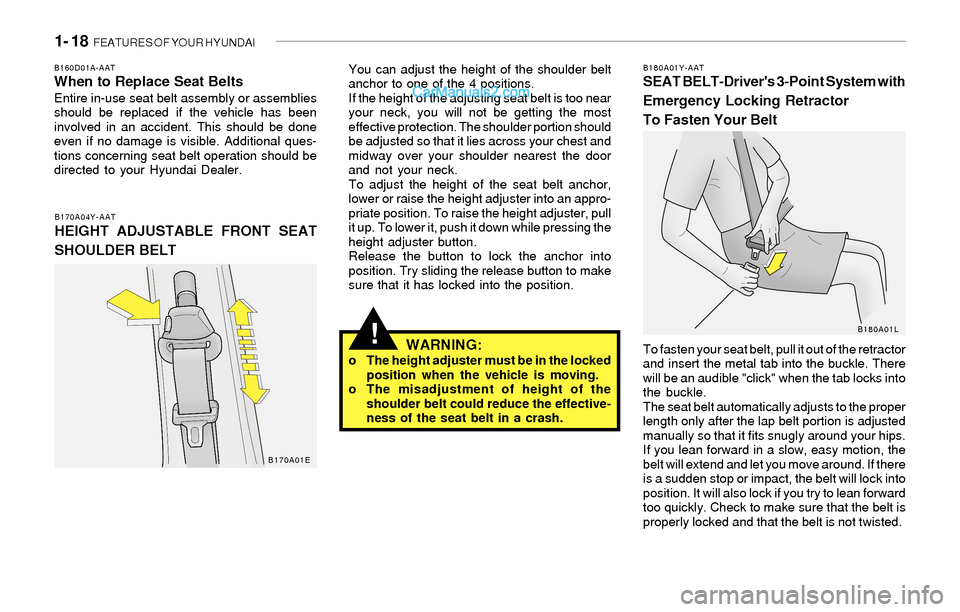
1- 18 FEATURES OF YOUR HYUNDAI
!
B180A01Y-AATSEAT BELT-Driver's 3-Point System with
Emergency Locking Retractor
To Fasten Your BeltB160D01A-AATWhen to Replace Seat BeltsEntire in-use seat belt assembly or assemblies
should be replaced if the vehicle has been
involved in an accident. This should be done
even if no damage is visible. Additional ques-
tions concerning seat belt operation should be
directed to your Hyundai Dealer.
B170A04Y-AATHEIGHT ADJUSTABLE FRONT SEAT
SHOULDER BELT
B170A01E
To fasten your seat belt, pull it out of the retractor
and insert the metal tab into the buckle. There
will be an audible "click" when the tab locks into
the buckle.
The seat belt automatically adjusts to the proper
length only after the lap belt portion is adjusted
manually so that it fits snugly around your hips.
If you lean forward in a slow, easy motion, the
belt will extend and let you move around. If there
is a sudden stop or impact, the belt will lock into
position. It will also lock if you try to lean forward
too quickly. Check to make sure that the belt is
properly locked and that the belt is not twisted.
B180A01L
You can adjust the height of the shoulder belt
anchor to one of the 4 positions.
If the height of the adjusting seat belt is too near
your neck, you will not be getting the most
effective protection. The shoulder portion should
be adjusted so that it lies across your chest and
midway over your shoulder nearest the door
and not your neck.
To adjust the height of the seat belt anchor,
lower or raise the height adjuster into an appro-
priate position. To raise the height adjuster, pull
it up. To lower it, push it down while pressing the
height adjuster button.
Release the button to lock the anchor into
position. Try sliding the release button to make
sure that it has locked into the position.
WARNING:o The height adjuster must be in the locked
position when the vehicle is moving.
o The misadjustment of height of the
shoulder belt could reduce the effective-
ness of the seat belt in a crash.
Page 31 of 208

FEATURES OF YOUR HYUNDAI 1- 19
!
B190A01Y-AAT
SEAT BELTS-Front Passenger and Rear
Seat 3-Point System with Combination
Locking Retractor
To Fasten Your Belt
Combination retractor type seat belts are in-
stalled in the rear seat positions to help accom-
modate the installation of child restraint sys-
tems. Although a combination retractor is also
installed in the front passenger seat position,
Hyundai strongly recommends that children
always be seated in the rear seat. NEVER place
any infant restraint system in the front seat of the
vehicle.
This type of seat belt combines the features of
both an emergency locking retractor seat belt
and an automatic locking retractor seat belt. To
fasten your seat belt, pull it out of the retractor
and insert the metal tab into the buckle. There
will be an audible "click" when the tab locks into
the buckle. When not securing a child restraint,
the seat belt operates in the same way as the
driver's seat belt (Emergency Locking Retrac-tor Type). It automatically adjusts to the proper
length only after the lap belt portion of the seat
belt is adjusted manually so that it fits snugly
around your hips. When the seat belt is fully
extended from the retractor to allow the instal-
lation of a child restraint system, the seat belt
operation changes to allow the belt to retract, but
not to extend. (Automatic Locking Retractor
Type). See page 1-24.
NOTE:Although the combination retractor pro-
vides the same level of protection for seated
passengers in either emergency or auto-
matic locking modes, it is recommended
that seated passengers use the emergency
locking feature for improved convenience.
The automatic locking function is intended
to facilitate child restraint installation. To
convert from the automatic locking feature
to the emergency locking operation mode,
allow the unbuckled seat belt to fully re-
tract.
WARNING:o For maximum restraint system protec-
tion, the seat belts must always be used
whenever the car is moving.
o Seat belts are most effective when
seatbacks are in the upright position.
o Children must always be seatbelted in
the rear seats. Never allow children to
ride in the front passanger seat.
o The shoulder belt should be positioned
midway over the shoulder nearest the
door for the most effective protection.
Never wear the seat belt under the arm
nearest the door. Wearing the belt under
the arm nearest the door could cause
serious or fatal injuries in an accident.
o Avoid wearing twisted seat belts. A
twisted belt can't do its job as well. In a
collision, it could even cut into you. Be
sure the belt is straight and not twisted.
o Be careful not to damage the belt web-
bing or hardware. If the belt webbing or
hardware is damaged, replace it.
NOTE:Seat belt reminder light comes and stays on
until the seat belt is fastened when the
ignition key is turned "ON" or "START".
And, the warning chime will also sound for
about 6 seconds.
Page 32 of 208
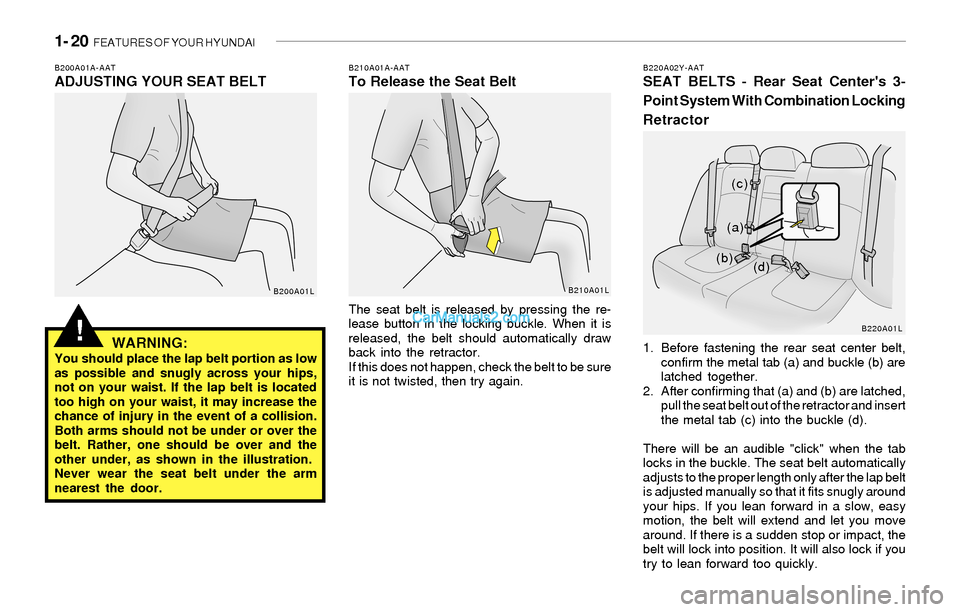
1- 20 FEATURES OF YOUR HYUNDAI
!
The seat belt is released by pressing the re-
lease button in the locking buckle. When it is
released, the belt should automatically draw
back into the retractor.
If this does not happen, check the belt to be sure
it is not twisted, then try again.
B220A02Y-AATSEAT BELTS - Rear Seat Center's 3-
Point System With Combination Locking
Retractor
1. Before fastening the rear seat center belt,
confirm the metal tab (a) and buckle (b) are
latched together.
2. After confirming that (a) and (b) are latched,
pull the seat belt out of the retractor and insert
the metal tab (c) into the buckle (d).
There will be an audible "click" when the tab
locks in the buckle. The seat belt automatically
adjusts to the proper length only after the lap belt
is adjusted manually so that it fits snugly around
your hips. If you lean forward in a slow, easy
motion, the belt will extend and let you move
around. If there is a sudden stop or impact, the
belt will lock into position. It will also lock if you
try to lean forward too quickly.
B200A01A-AATADJUSTING YOUR SEAT BELT
WARNING:
You should place the lap belt portion as low
as possible and snugly across your hips,
not on your waist. If the lap belt is located
too high on your waist, it may increase the
chance of injury in the event of a collision.
Both arms should not be under or over the
belt. Rather, one should be over and the
other under, as shown in the illustration.
Never wear the seat belt under the arm
nearest the door.
B210A01A-AATTo Release the Seat Belt
B200A01LB210A01L
B220A01L
(a)
(b)
(d) (c)
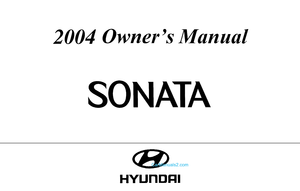 1
1 2
2 3
3 4
4 5
5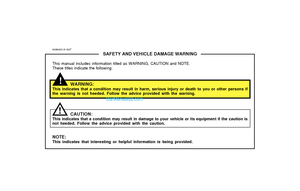 6
6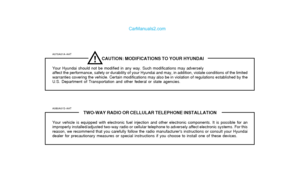 7
7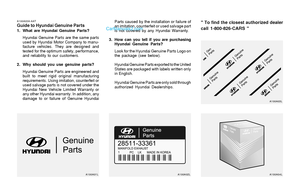 8
8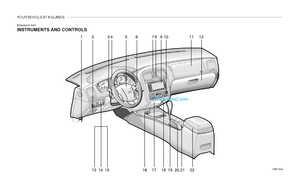 9
9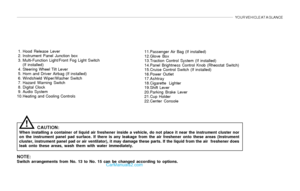 10
10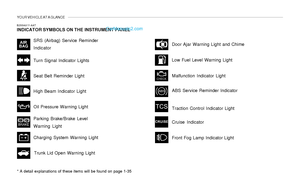 11
11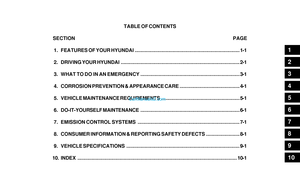 12
12 13
13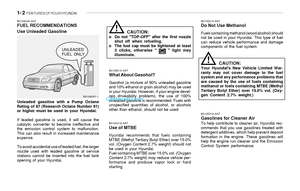 14
14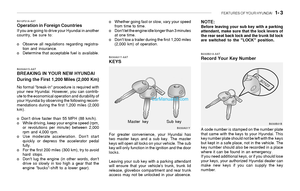 15
15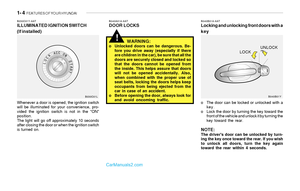 16
16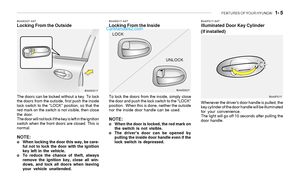 17
17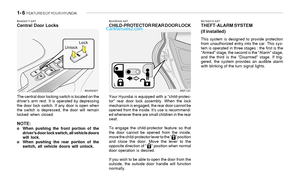 18
18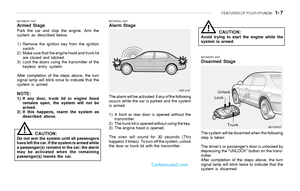 19
19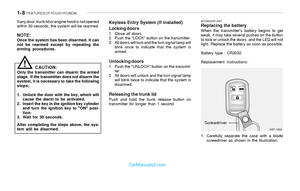 20
20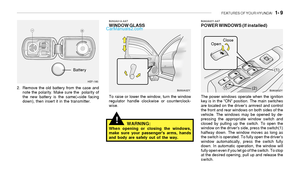 21
21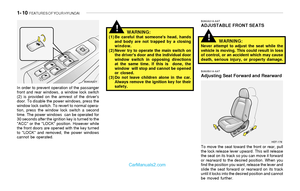 22
22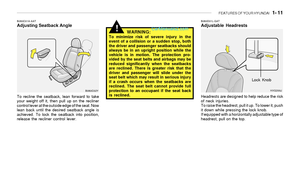 23
23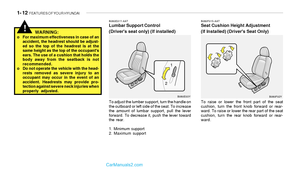 24
24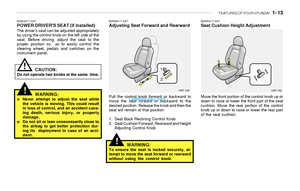 25
25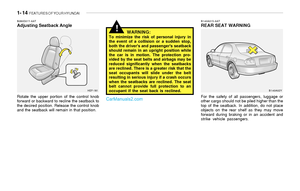 26
26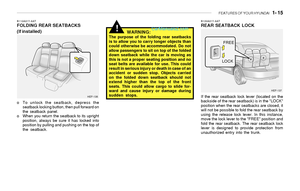 27
27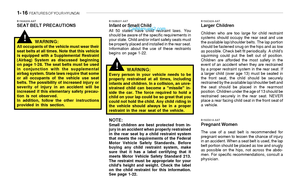 28
28 29
29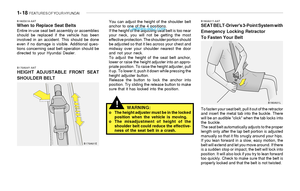 30
30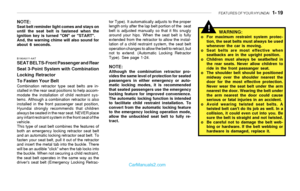 31
31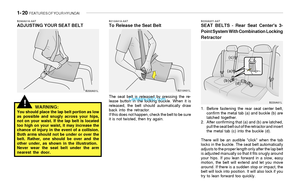 32
32 33
33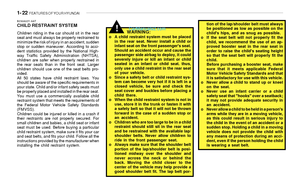 34
34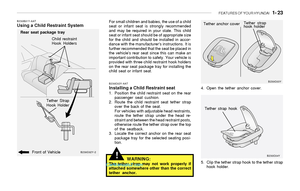 35
35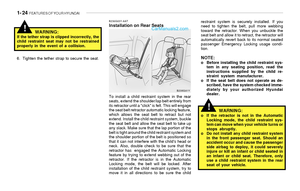 36
36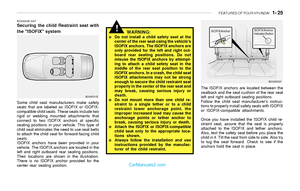 37
37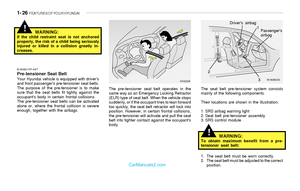 38
38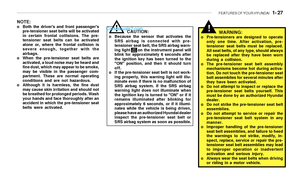 39
39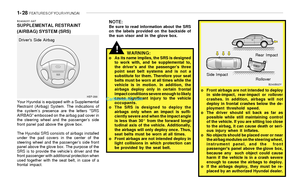 40
40 41
41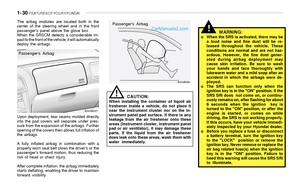 42
42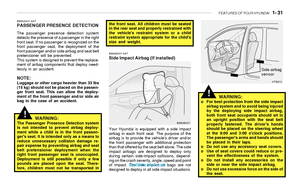 43
43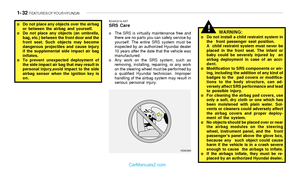 44
44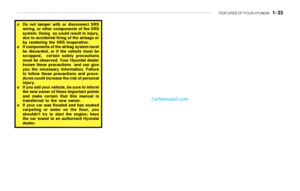 45
45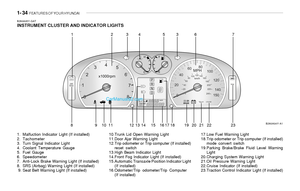 46
46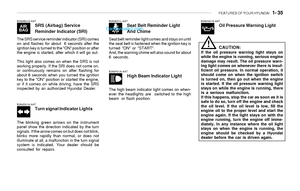 47
47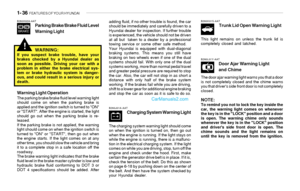 48
48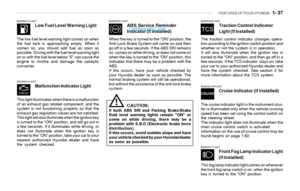 49
49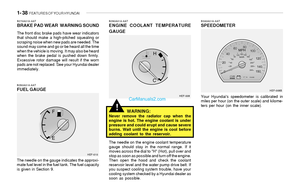 50
50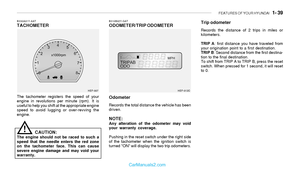 51
51 52
52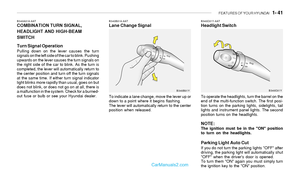 53
53 54
54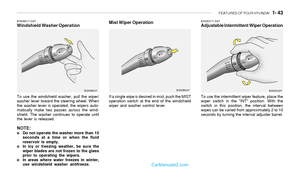 55
55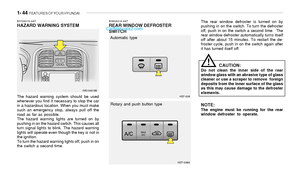 56
56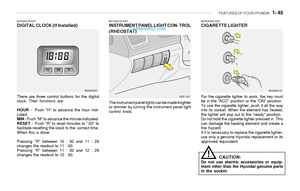 57
57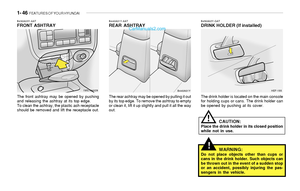 58
58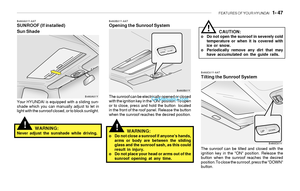 59
59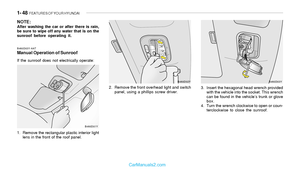 60
60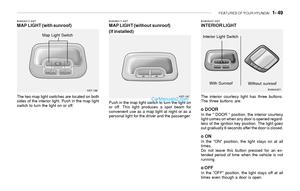 61
61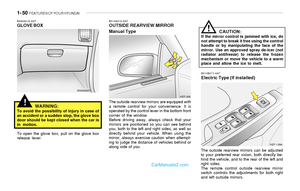 62
62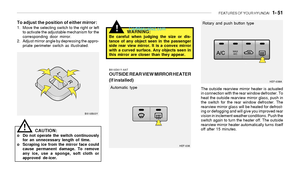 63
63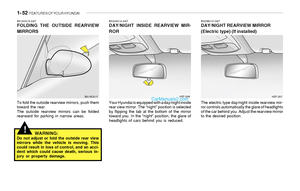 64
64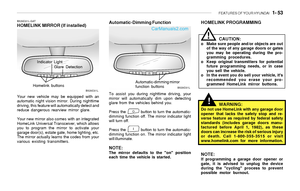 65
65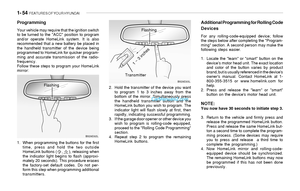 66
66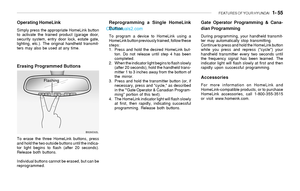 67
67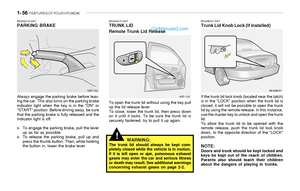 68
68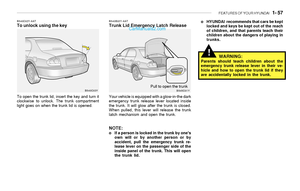 69
69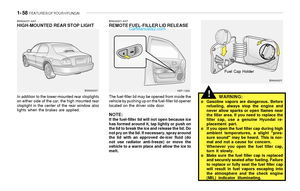 70
70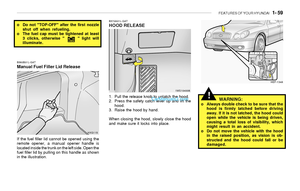 71
71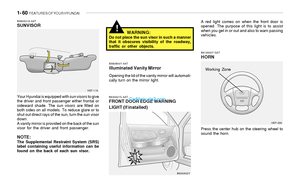 72
72 73
73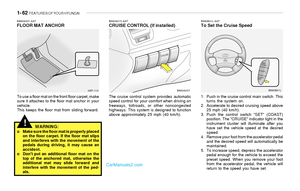 74
74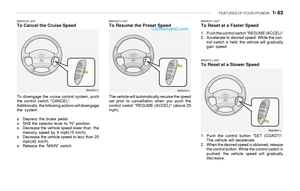 75
75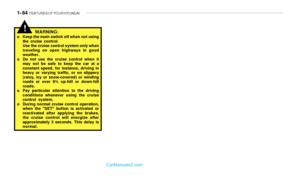 76
76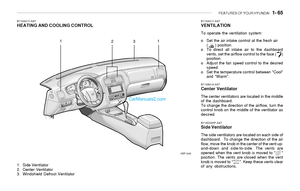 77
77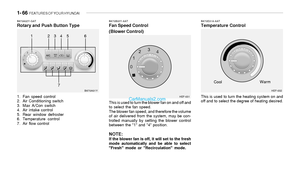 78
78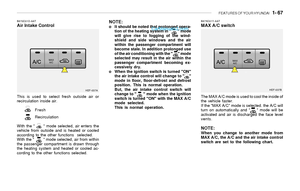 79
79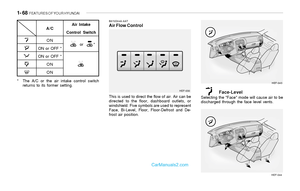 80
80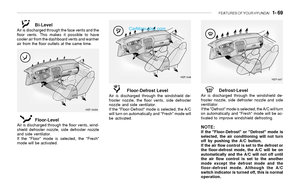 81
81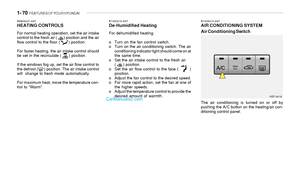 82
82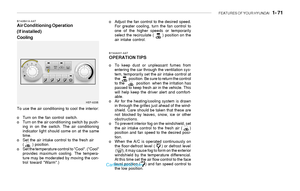 83
83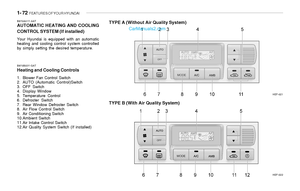 84
84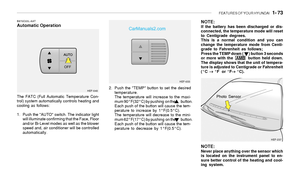 85
85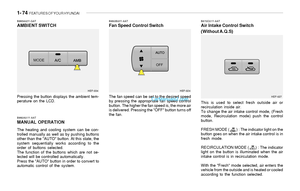 86
86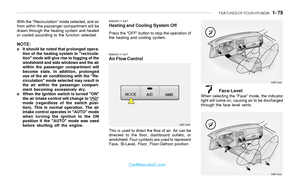 87
87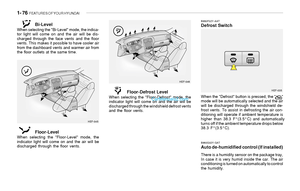 88
88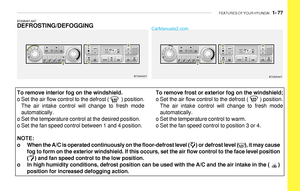 89
89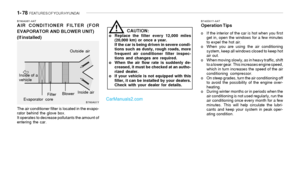 90
90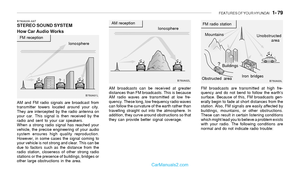 91
91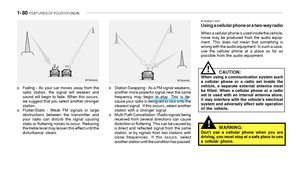 92
92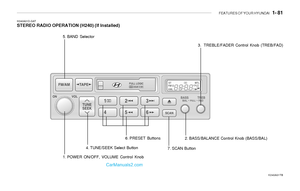 93
93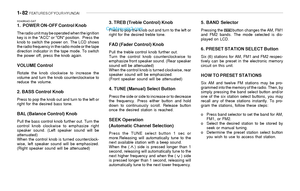 94
94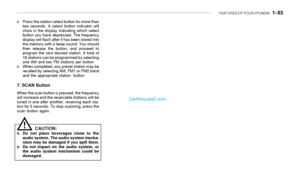 95
95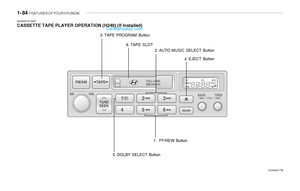 96
96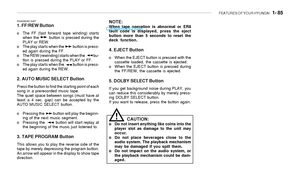 97
97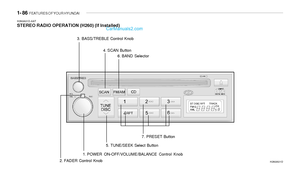 98
98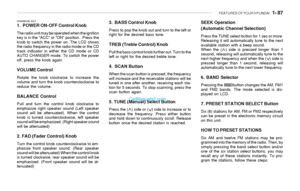 99
99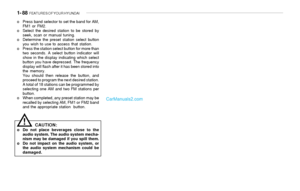 100
100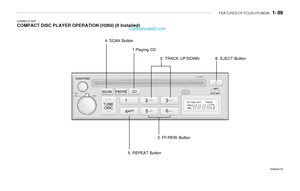 101
101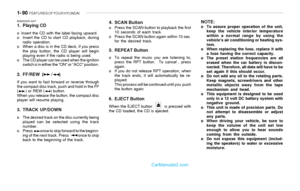 102
102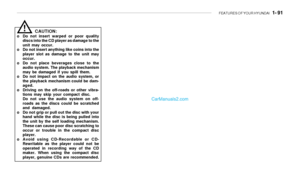 103
103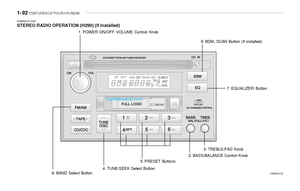 104
104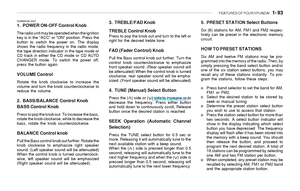 105
105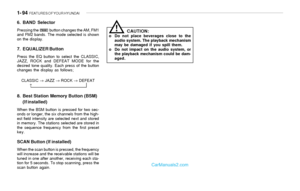 106
106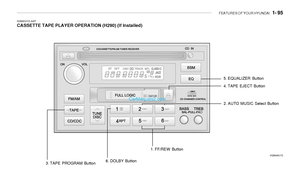 107
107 108
108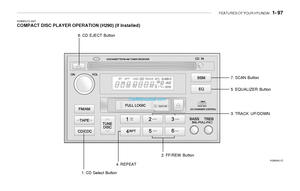 109
109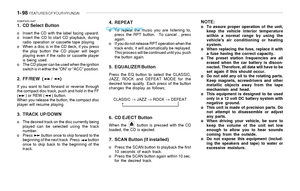 110
110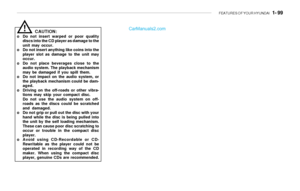 111
111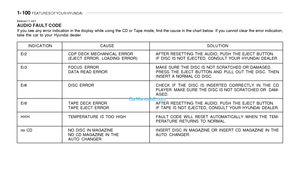 112
112 113
113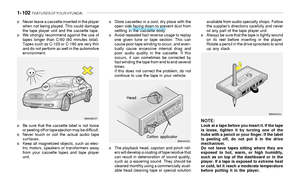 114
114 115
115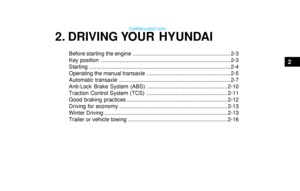 116
116 117
117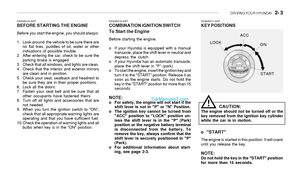 118
118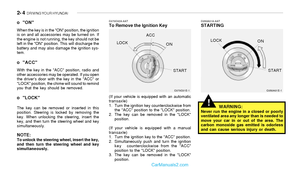 119
119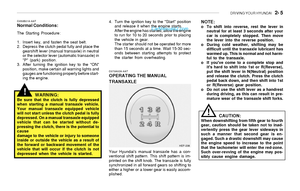 120
120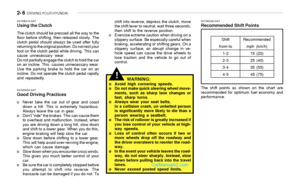 121
121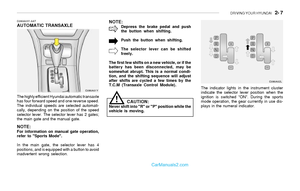 122
122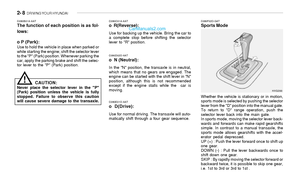 123
123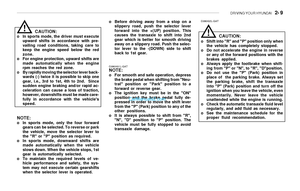 124
124 125
125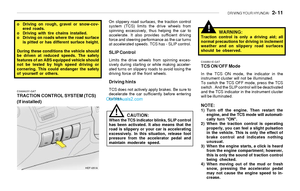 126
126 127
127 128
128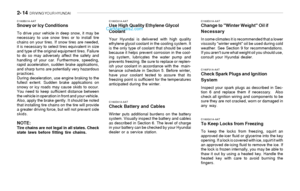 129
129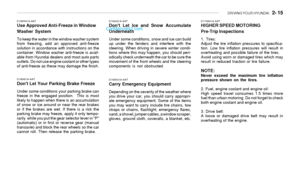 130
130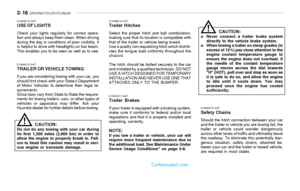 131
131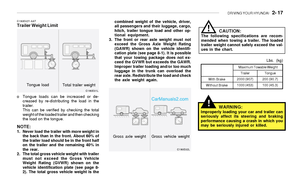 132
132 133
133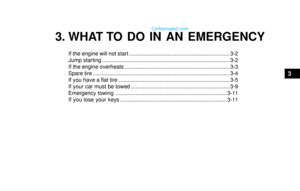 134
134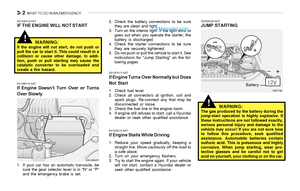 135
135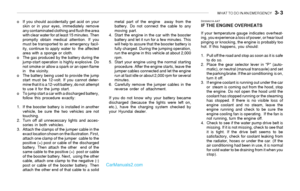 136
136 137
137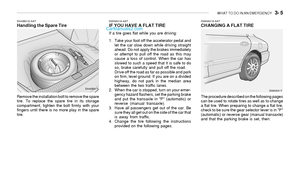 138
138 139
139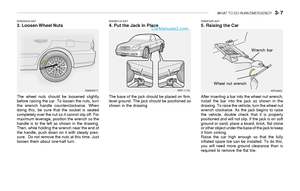 140
140 141
141 142
142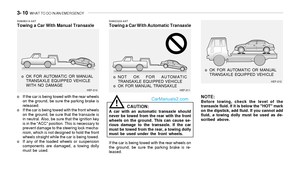 143
143 144
144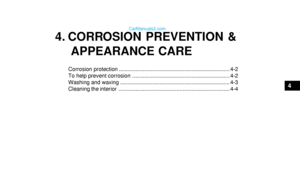 145
145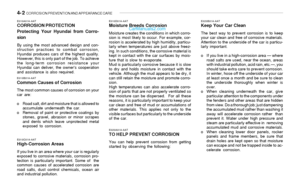 146
146 147
147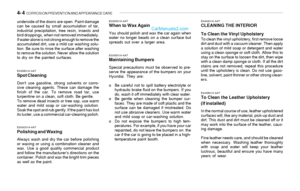 148
148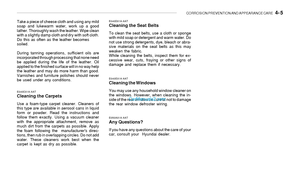 149
149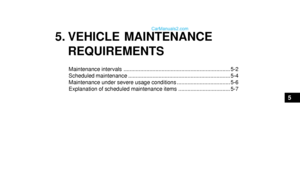 150
150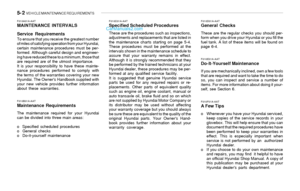 151
151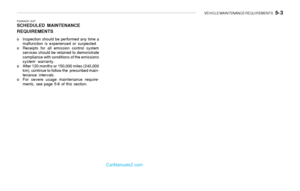 152
152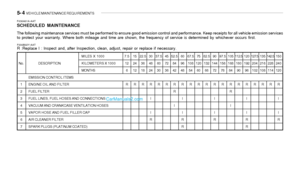 153
153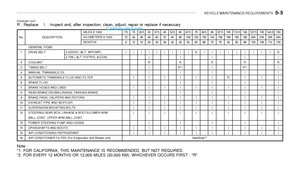 154
154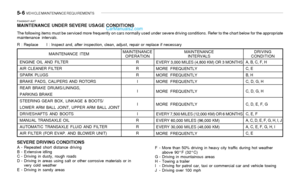 155
155 156
156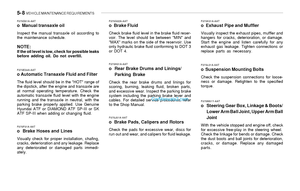 157
157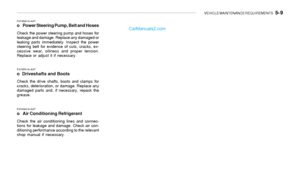 158
158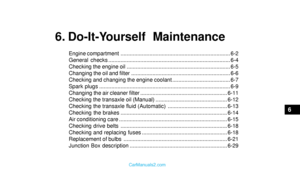 159
159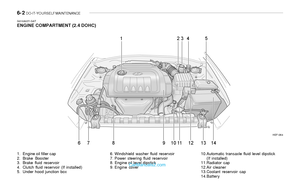 160
160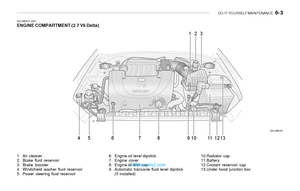 161
161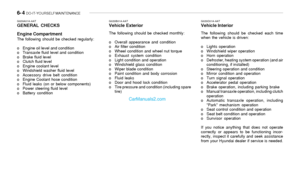 162
162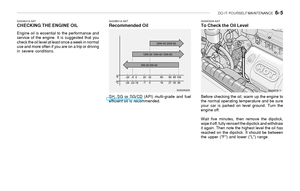 163
163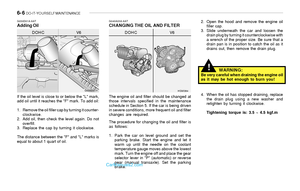 164
164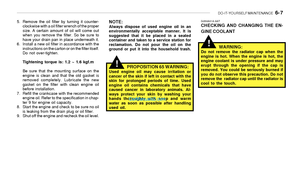 165
165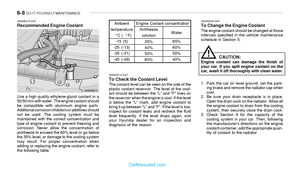 166
166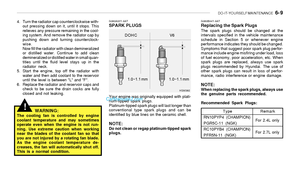 167
167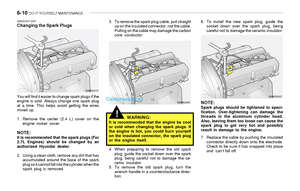 168
168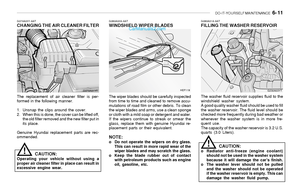 169
169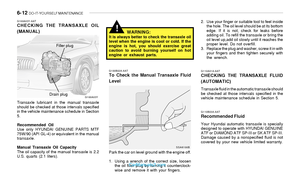 170
170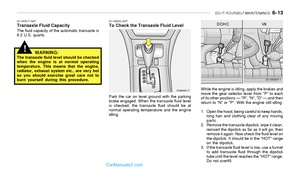 171
171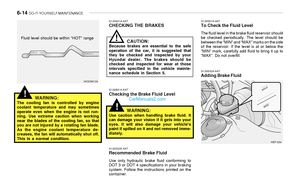 172
172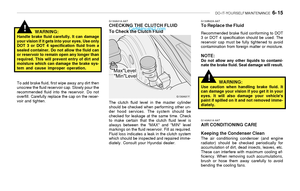 173
173 174
174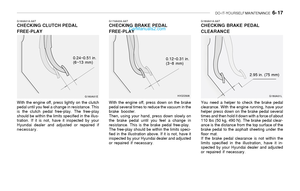 175
175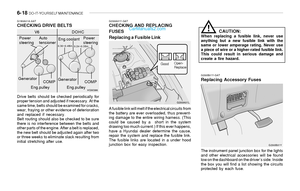 176
176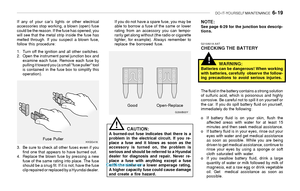 177
177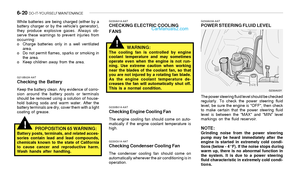 178
178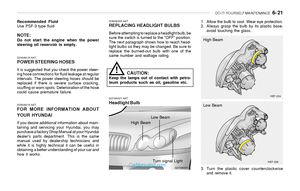 179
179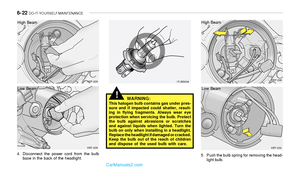 180
180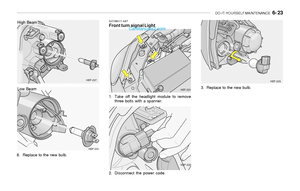 181
181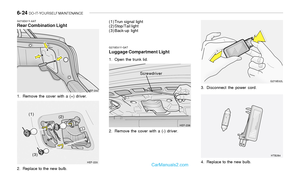 182
182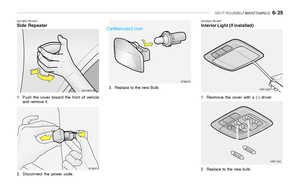 183
183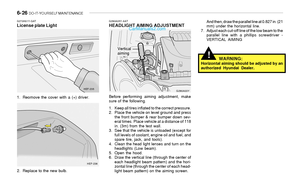 184
184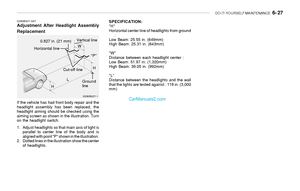 185
185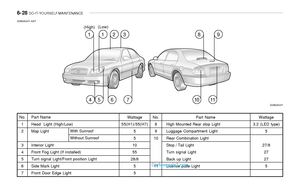 186
186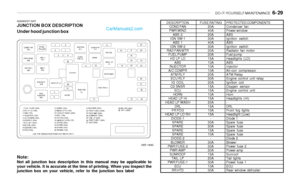 187
187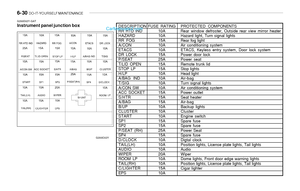 188
188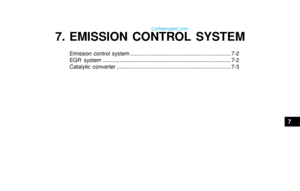 189
189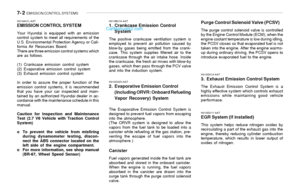 190
190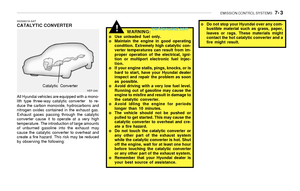 191
191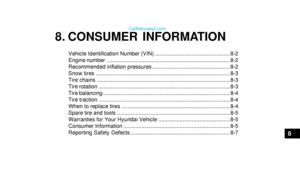 192
192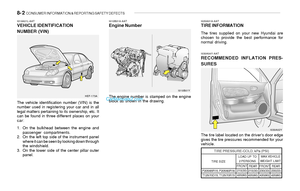 193
193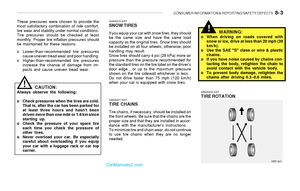 194
194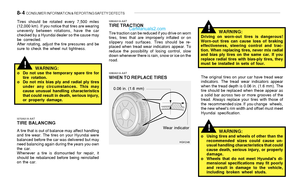 195
195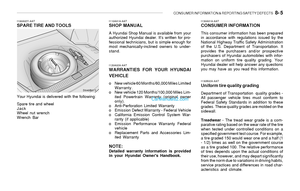 196
196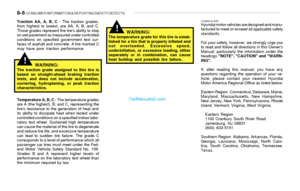 197
197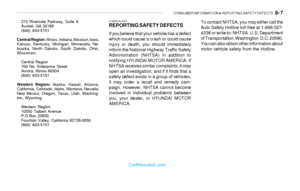 198
198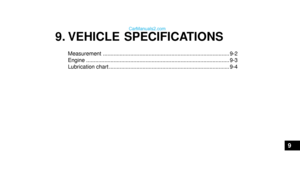 199
199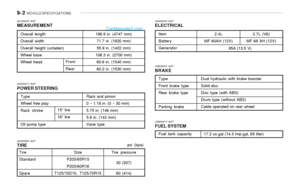 200
200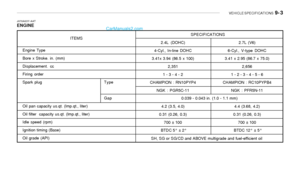 201
201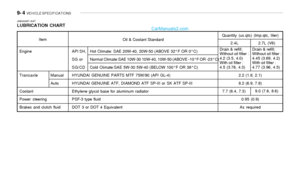 202
202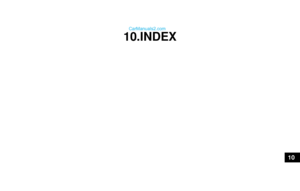 203
203 204
204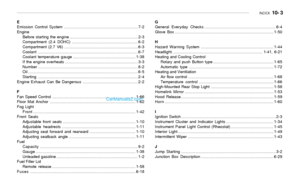 205
205 206
206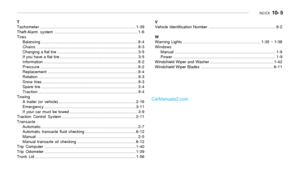 207
207






